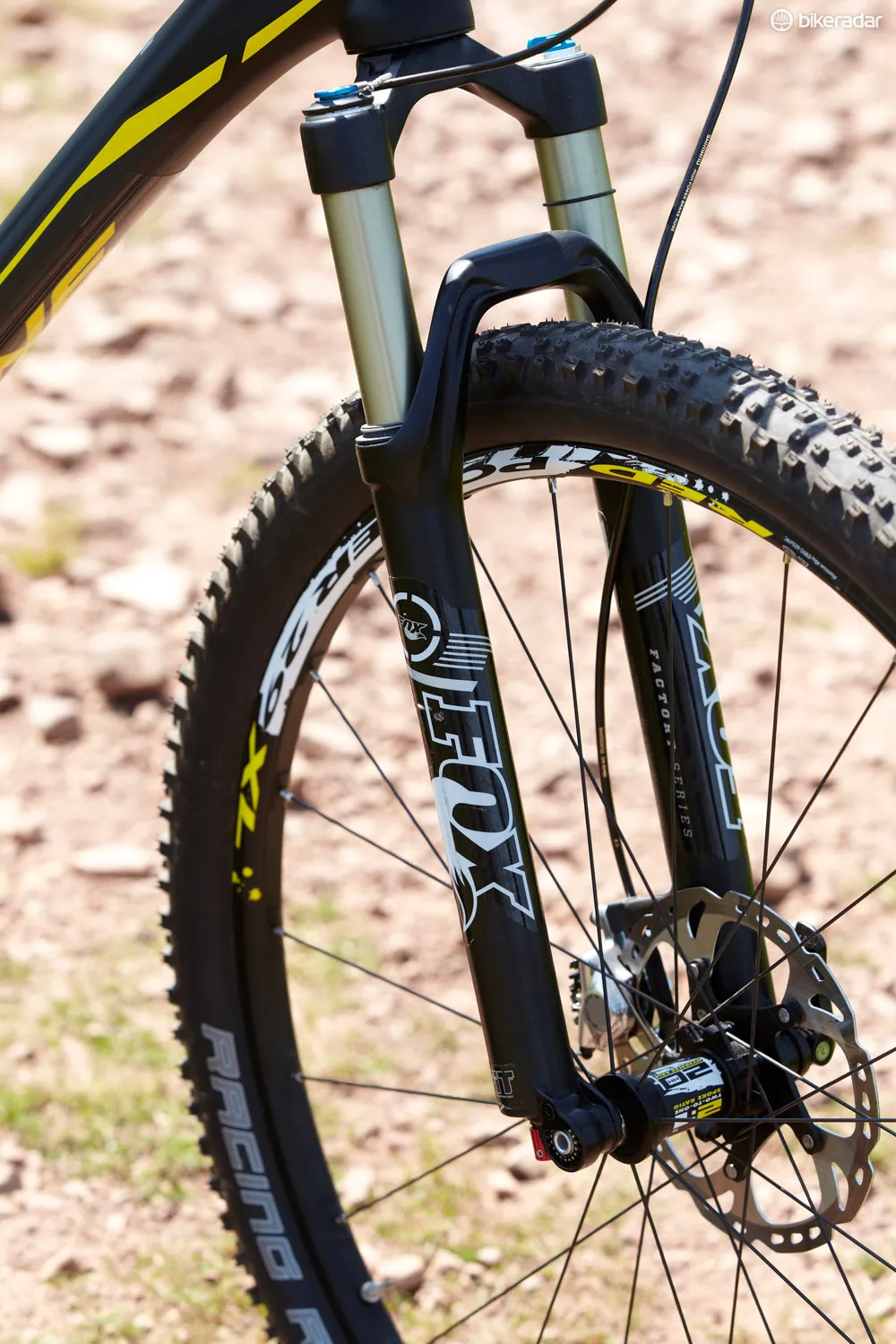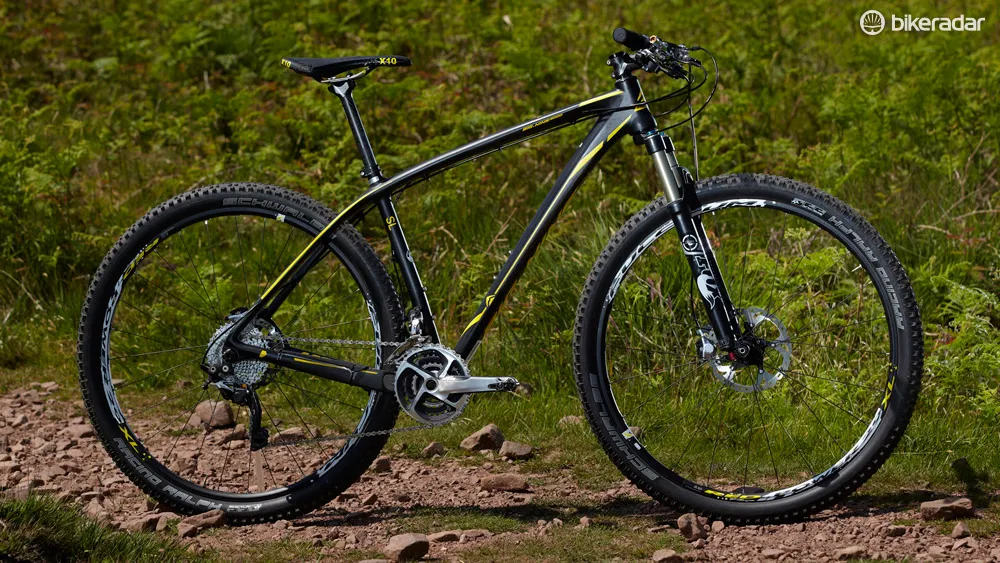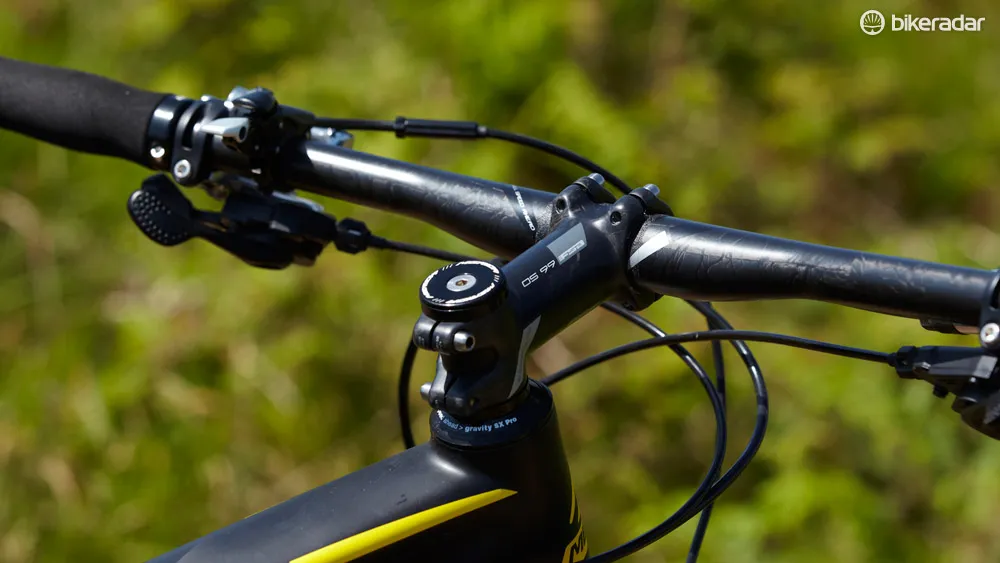Like many manufacturers, Merida offers its race-specced hardtails with a choice of 650b (Big.Seven) or 29in (Big.Nine) wheels. Though the smaller size fits him better, team rider José Hermida generally plumps for the latter, reckoning that the easy-rolling big wheels give a safety advantage when tiredness kicks in. We did the same, choosing the Big.Nine CF 5000. So can it justify its hefty price tag?
Frame and equipment: cream of the crop
It’s easy to see why a rider who’s a little shorter in stature might plump for the 650b version – the Big.Nine is only available in 17 or 19in sizes (or 21in if you downgrade to the CF 3000). The Big.Seven only goes down to a 17in too, but there are three sizes in total and the smaller wheels mean a lower standover. If you’re of average height you should be able to find a bike to fit, but shorter riders may struggle.
Merida’s designers have gone to town with carbon’s flexible engineering properties (summarised as “put the material where it’s needed”), giving the frame a pleasingly organic appearance, with one curve flowing seamlessly into another to form a structure that’s still recognisably a classic diamond bike frame. Simply put, it looks fast.
Internal routing keeps the lines clean, though the effect is slightly spoiled by the external rear brake hose and over-the-seatstay caliper. Down tube and chainstay protectors help shield the frame from abrasion and impact damage. The wide stance of the rear end may cause problems for riders who pedal with a heels-in style though.
In common with many carbon hardtail makers, Merida has designed the seatstays to flex a tiny amount vertically. It also claims to have incorporated a special Bio Fiber Damping Compound into the rear end’s carbon weave, in an attempt to enhance the material’s natural vibration-damping properties.

Up front, Fox's 32 Float CTD fork delivers 100mm of well-controlled travel
A Fox 32 Float CTD, complete with thru-axle, plugs into the front end. Lighter forks are available for true weight obsessives, but 100mm (4in) of well-controlled and accurate-steering travel is hard to argue with, particularly when it’s combined with a handlebar remote to take care of the CTD adjustment. It’s a shame the lever will only switch from ‘Climb’ straight back to ‘Descend’, but that’s a minor niggle that’s easy enough to adjust to.
Shimano’s range-topping XTR groupset is peerless in terms of performance and durability, but much of the difference in price between the CF 5000 and entry-level carbon race hardtails is accounted for by the gears and brakes. Is it worth paying for?
Well, it depends. For our money, nothing can match the smooth, predictable feel of XTR. Whether it’s an under-power gear shift or one-fingered brake feathering on a slippery corner, it all works with an almost uncanny precision, whatever the trail or weather conditions. Experience has shown that it’s durable, too. There’s no getting away from the fact that it’s expensive though, both to buy and to maintain.

The Merida boasts a full XTR gear and brake set, giving exceptional performance
It may seem odd to equip a race bike with a 3x10 setup, given the increasing popularity of lighter and simpler 2x and 1x systems. But for overall gear range the 3x system is still hard to beat, albeit with a slight weight penalty.
The rest of the kit is top-notch, as you’d expect at this price. The bar and seatpost are made from vibration-absorbing, gram-shedding carbon, and the straight-pull Fulcrum wheels shod with Schwalbe’s ubiquitous light and fast-rolling Racing Ralphs bring overall rolling weight down to the same level as many smaller-wheeled bikes.
Ride and handling: racing for the horizon
The first thing that immediately stands out is the way the Merida barely troubles the scales. Although it’s a way off Hermida’s race bike’s 8.8kg weight, a hair over 10kg puts the CF 5000 firmly in the premier league for a stock XC bike. Combined with hoops that put many smaller-wheeled bikes to shame and a chassis stiff enough to keep even big-ring mashers happy, the gram-conscious build translates into rapid forward progress. Stomp on the pedals and it surges on in a way that’ll have you scrabbling for a bigger gear sooner than you expected. It’s just what you want in a race bike.

Even at a glance, the Big.Nine CF 5000's flowing lines leave you in no doubt this is a serious speed machine
Aiding and abetting the feeling of racing towards the horizon is the seamless fluidity of the CF 5000’s stop-and-go kit. From the willingness of the fork to suck up whatever you throw at it to the uncanny ability of the brake levers to translate the slightest finger pressure into stopping power at the rotors, every stab at a gear shifter or lunge through a rock garden reminds you why this bike costs what it does.
The comfort advantage of the rear stays’ built-in flexiness is obvious, but not as pronounced as on other carbon frames we’ve ridden. Still, with the skinny carbon post and easy-rolling big wheels, chewing up long sections of stutter-bump-infested trail – even with the hammer down – is perfectly possible. The one thing this bike is lacking is a sense of fun. Despite the low weight and peerless components, it lacks the playfulness that can be the cherry on top of a great race bike.

The only thing this bike lacks is an overt sense of playfulness to ice the cake
Overall though, it’s tough to find fault. Which is what you’d hope for at this price. The CF 5000’s problem is that some bikes come close to matching its performance at a lower price – including its little brother, the XT-equipped Big.Nine CF 3000. Is it worth paying extra for XTR? Ultimately, that must be a personal decision. But we can’t help feeling that, if it were our money, we’d probably take the CF 3000 and pocket the difference.




